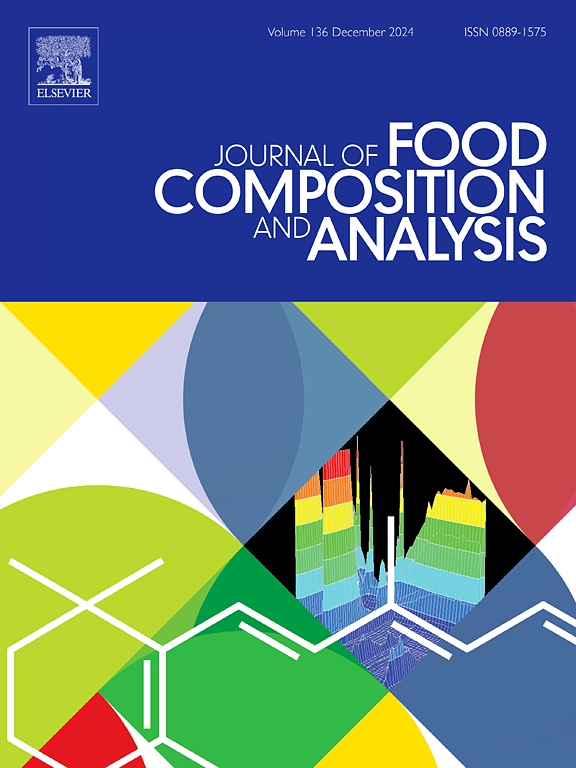Rapid determination of illegal dyes in aquaculture products using LC-Q-Orbitrap HRMS: Method development, validation, and application
IF 4
2区 农林科学
Q2 CHEMISTRY, APPLIED
引用次数: 0
Abstract
This study presents a sensitive, reliable, and rapid analytical method for the determination of four illegal dyes, malachite green (MG), crystal violet (CV), leucomalachite green (LMG), and leucocrystal violet (LCV) in Nile tilapia (Oreochromis niloticus), salmon (Salmo salar), crawfish (Procambarus clarkii), and shrimp (Penaeus vannamei) matrices using liquid chromatography coupled with quadrupole-Orbitrap high-resolution mass spectrometry (LC-Q-Orbitrap HRMS). The method employs a simplified sample preparation procedure, enabling high-throughput analysis. Validation was performed in accordance with the Commission Implementing Regulation (CIR) EU 2021/808, using three concentration levels ranging from 0.25 to 0.75 μg/kg. The method demonstrated excellent performance, with recoveries ranging from 71 % to 98 % and both repeatability and reproducibility consistently below 9 %. Calibration curves exhibited good linearity, with coefficients of determination (R2) exceeding 0.9955. The limits of detection (LOD) and quantification (LOQ) ranged from 0.019 to 0.057 μg/kg and 0.061–0.173 μg/kg, respectively. The decision limit (CCα) and detection capability (CCβ) values ranged from 0.26 to 0.31 μg/kg and 0.28–0.35 μg/kg, respectively. The method was applied to analyze 200 samples, consisting of 50 samples each from the four aforementioned species, were collected from local markets in Egypt, revealing that 59.5 % of the samples contained illegal dye residues. The reliability of the method was further confirmed through successful participation in two proficiency testing (PT) rounds. This study represents one of the most comprehensive assessments of illegal dye residues in fish and crustacean products in the Egyptian market, highlighting the need for enhanced food safety monitoring in the region.
求助全文
约1分钟内获得全文
求助全文
来源期刊

Journal of Food Composition and Analysis
工程技术-食品科技
CiteScore
6.20
自引率
11.60%
发文量
601
审稿时长
53 days
期刊介绍:
The Journal of Food Composition and Analysis publishes manuscripts on scientific aspects of data on the chemical composition of human foods, with particular emphasis on actual data on composition of foods; analytical methods; studies on the manipulation, storage, distribution and use of food composition data; and studies on the statistics, use and distribution of such data and data systems. The Journal''s basis is nutrient composition, with increasing emphasis on bioactive non-nutrient and anti-nutrient components. Papers must provide sufficient description of the food samples, analytical methods, quality control procedures and statistical treatments of the data to permit the end users of the food composition data to evaluate the appropriateness of such data in their projects.
The Journal does not publish papers on: microbiological compounds; sensory quality; aromatics/volatiles in food and wine; essential oils; organoleptic characteristics of food; physical properties; or clinical papers and pharmacology-related papers.
 求助内容:
求助内容: 应助结果提醒方式:
应助结果提醒方式:


